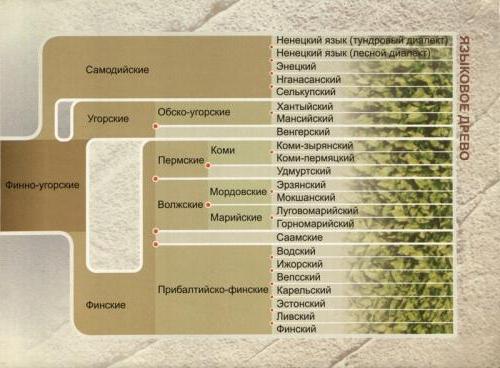The Uralic language family is a separate independent language family. The number of native speakers of this group is approximately twenty-five million people, mainly living in the territories of North-Western Europe.
Status of the Uralic languages
The most common Uralic languages are Hungarian, Finnish, Estonian, which are official languages in Hungary, Finland and Estonia, respectively, and in the European Union. Other Uralic languages with a significant number of speakers are Erzya, Moksha, Mari, Udmurt and Komi, which are officially recognized in various regions of Russia.
The name "Ural language family" stems from the fact that the territories where these languages are spoken are located on both sides of the Ural Mountains. In addition, territories in the vicinity of the Urals are traditionally considered its original homeland (or ancestral home).
The term "Finno-Ugric languages" is sometimes used as a synonym for the Urals, although they are only part of this language family and do not include Samoyed languages. Scientists who do not accept the traditional notions that Samoyed languages are a structural part of the Urals, suggest excluding them from this family. For example, the Finnish scientist Tapani Salminen sees these two terms as synonyms.
Branches of the Uralic language family
Uralic languages - a language family that includes two branches:
The proximity of the Finno-Ugric and Samoyedic languages was established by E. Setial. Scientists came to the conclusion that in the distant past the Uralic language base existed and Finno-Ugric and Samoyedic languages appeared from it. Although the term “Uralic languages” has existed in science for a long time, the study of Finno-Ugric and Samoyedic languages is often carried out separately, together with the more comprehensive concept of “Uralistics”, there is still a branch of linguistics as “Finno-Ugric studies” that explores Finno-Ugric languages.
Classification of the Uralic languages
The traditional classification of the Uralic languages has existed since the end of the nineteenth century. It was introduced by Richard Donner. The Doner classification model is often quoted in whole or in part in encyclopedias, reference books and reviews of the Ural family. Donner's model is as follows:
Finno-Ugric group:
1. Ugric languages, among them:
- Hungarian;
- Ob-Ugric (Ob Ugrians);
- Khanty-Mansi languages.
2. Finno-Perm (Perm-Finnish) languages:
- Perm (Udmurt language);
- Finno-Volga (Finno-Mari);
- Volga-Finnish;
- Mari
- Mordovian.
3. Finnish-Sami;
At the time of Donner, Samoyed languages were still poorly known, and he was not able to solve these problems in the study. As they became known at the beginning of the 20th century, they underwent careful study. In the terminology adopted for the Uralic languages as a whole family, the name "Finno-Ugric group" is still used to this day as a synonym for the whole family. Finno-Ugric and Samoyedic languages are the main branches of the Ural family.
What peoples belong to the Uralic language family?
The largest people speaking the languages of the Ural family are Hungarians. The number of native speakers of the Hungarian language is about fifteen million. Finns also belong to the Uralic peoples, the population of Finland - about six million people. Estonians living in Western Europe also speak the Finno-Ugric language (Baltic branch) and belong to the Uralic peoples. All these languages have a fairly close lexical relationship, which forms this language substrate, called the Uralic language family. Peoples, which also belong to this linguistic branch, are less numerous.

For example, these are Mari, Erzya and Komi peoples, Udmurts. The remaining Ugric languages are on the verge of extinction. Especially large differences in the Uralic languages in the direction of syntax. The Uralic language family is a rather diverse and vast geographically linguistic branch of Europe. The syntax and grammar of the Uralic languages are considered very difficult to learn, since they are very different from European languages.